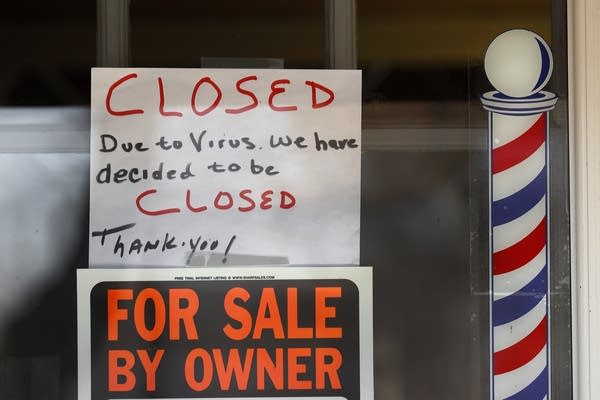April 14 update on COVID-19 in MN: 79 dead; job losses falling hard on people of color

"For Sale By Owner" and "Closed Due to Virus" signs are displayed in the window of Images On Mack in Grosse Pointe Woods, Mich., on April 2.
Paul Sancya | AP Photo file
Go Deeper.
Create an account or log in to save stories.
Like this?
Thanks for liking this story! We have added it to a list of your favorite stories.


